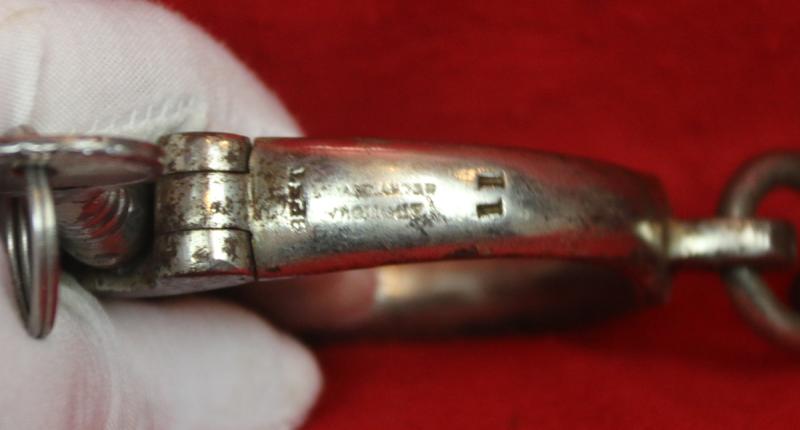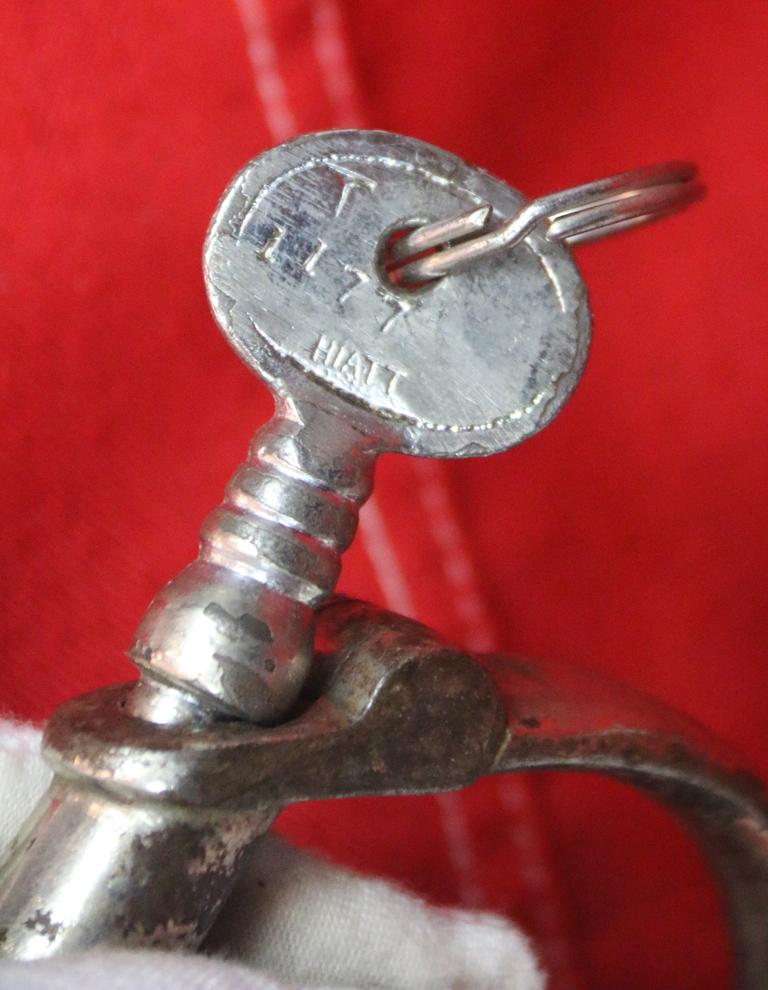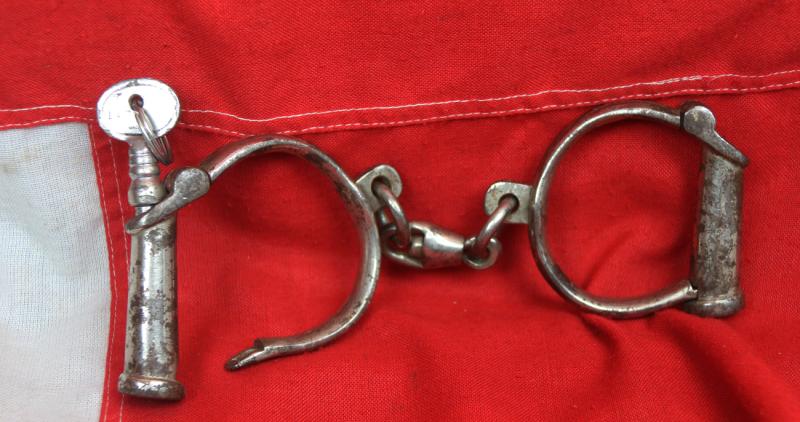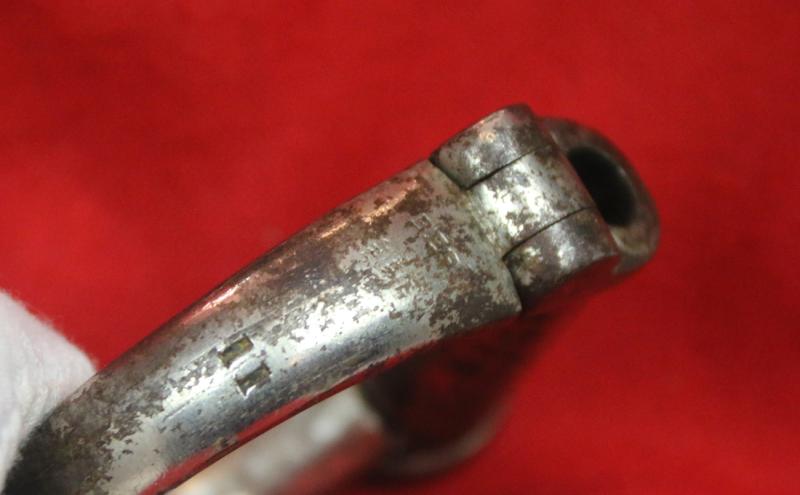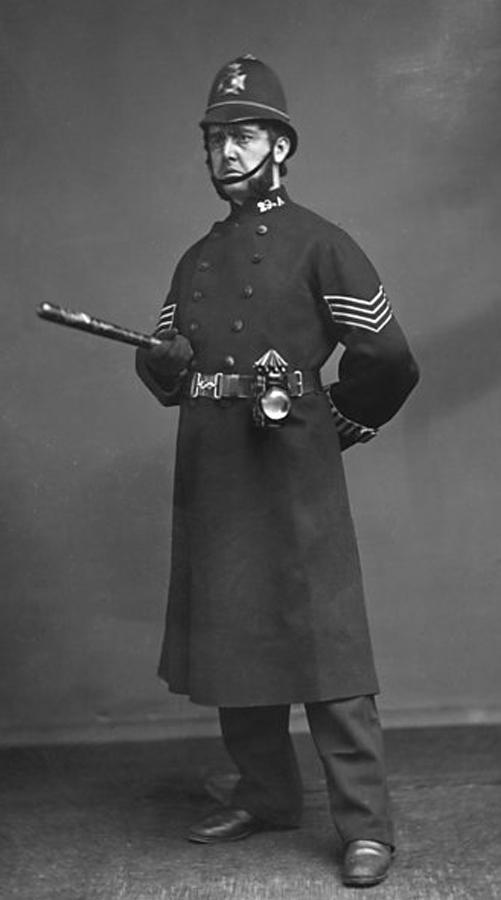Victorian Jack the Ripper Period 'Derby' Pattern Best Warranted Wrought Hard Steel Handcuffs
Two metal cuffs attached together by a metal ring on each cuff, linked with a swivel in the centre to join both ends together. One cuff has a metal key inserted in lock. Key locks, unlocks and unscrews nicely.
Hiatt & Company began manufacturing handcuffs and slave-chains in the 1780s and was the largest supplier of handcuffs to the British police.
The Whitechapel murders were committed in or near the largely impoverished Whitechapel district in the East End of London between 3 April 1888 and 13 February 1891. At various points some or all of these eleven unsolved murders of women have been ascribed to the notorious unidentified serial killer known as Jack the Ripper.
The murderer or murderers were never identified and the cases remain unsolved. Sensational reportage and the mystery surrounding the identity of the killer or killers fed the development of the character "Jack the Ripper", who was blamed for all or most of the murders. Hundreds of books and articles discuss the Whitechapel murders, and they feature in novels, short stories, comic books, television shows, and films of multiple genres.
The poor of the East End had long been ignored by affluent society, but the nature of the Whitechapel murders and of the victims' impoverished lifestyles drew national attention to their living conditions. The murders galvanised public opinion against the overcrowded, unsanitary slums of the East End, and led to demands for reform. On 24 September 1888, George Bernard Shaw commented sarcastically on the media's sudden concern with social justice in a letter to The Star newspaper:
Code: 24294
195.00 GBP


